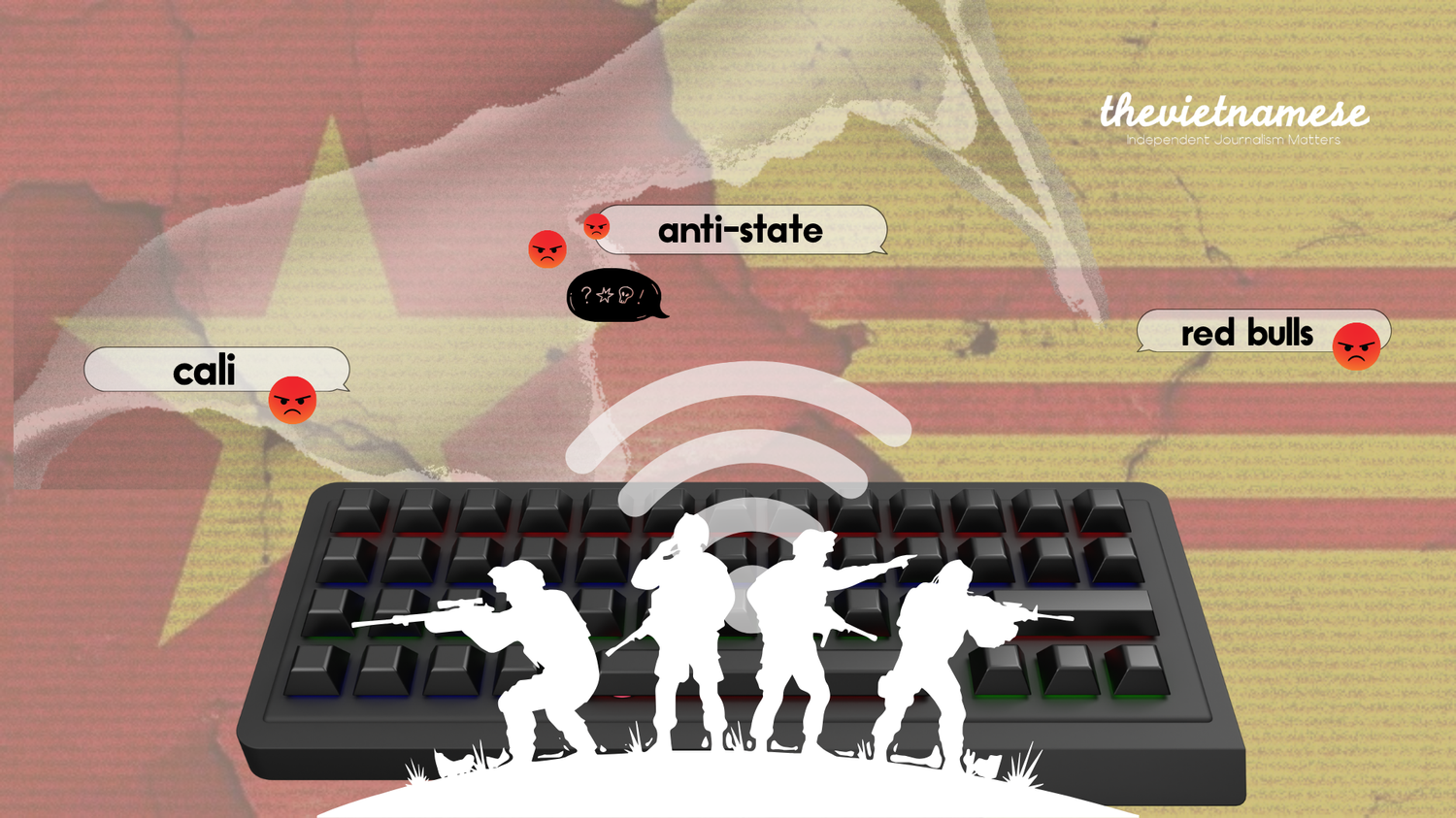An Bình wrote this article in Vietnamese and published it in Luat Khoa Magazine on April 30, 2025. Đàm Vĩnh Hằng translated it into English for The Vietnamese Magazine.
A Message of Unity, A Reality of Division
On April 30, 2025, Việt Nam celebrated the 50th anniversary of the end of the war with grandiose parades, drone light shows, and online complaints over traffic congestion from parade rehearsals in central Hồ Chí Minh City.
Amid the celebrations, General Secretary Tô Lâm published a notable article titled “Vietnam is One Nation, One People,” which was praised for its emphasis on national reconciliation. “Regardless of which side of history one stood on, we share a common origin, a common language, and a common love for our homeland,” he writes.
What stood out most was his choice of words. Rather than the decades-old rhetoric of “American puppets” or a “traitorous Southern regime,” Tô Lâm opted for a more neutral phrasing: “the other side of history.” For Việt Nam’s highest-ranking Communist official, such language signals a subtle but significant shift in how history may be acknowledged at the top.
In his position, Tô Lâm has likely met with individuals from all sides of the war—those who once bore arms against each other but have since laid down their differences to rebuild and heal the nation. But has he also witnessed the digital battleground where old grievances are kept alive, not by war veterans, but by the younger generation on social media? A generation born after the war, unfamiliar with the sound of bombs or the pain of a divided country, now carries the loudest voices of bitterness. The irony is piercing.
Tô Lâm writes: “So there is no reason why Vietnamese—sharing the same bloodline, the same mother Âu Cơ, and a collective longing for unity and prosperity—should continue to harbor hatred and division.”
This is a powerful message. But perhaps this line should be a question, posed not just to the people, but to the state apparatus and propaganda system he leads: Why, after 50 years of peace, does division still fester in the hearts of so many Vietnamese? Why can former soldiers who once pointed guns at each other now forgive and embrace, while young people who never lived through the war weaponize language online to attack and insult those with different perspectives?
The answer, many argue, lies in how history has been taught.
A History of One Color, One Voice
For decades, Việt Nam’s education system has presented a one-sided version of the past—a victor’s narrative authored by the winners of the war. History has not been a field for critical thought but a tool for ideological control. Under this system, patriotism is equated with unquestioning loyalty to the Communist Party, and any deviation from the official line is seen as a threat.
The result is a generation conditioned to silence dissent. Take, for example, the recent case of a young TV host who posted that she felt “no joy, no excitement, no pride” on April 30, the anniversary of the fall of Sài Gòn, due to parade-related traffic. Her comment triggered a wave of online vitriol, forcing her to shut down her social media accounts and leading her employer to cut ties with her.
This policing of thought is most potent around loaded terms like “the liberation of the South,” which has been framed as an absolute truth for half a century. When Southerners or their descendants ask, “Who was liberated, and from what,” they are often labeled unpatriotic or reactionary. The Communist Party has its rationale for calling the conflict a war of liberation, but Southerners also have the right to question what was achieved when, after 1975, millions fled by boat, tens of thousands were sent to re-education camps, and many endured years of hardship.
Even former Prime Minister Võ Văn Kiệt once acknowledged the duality of that day: “There were a million people who rejoiced, and a million who mourned.” If those who rejoiced have the right to celebrate, then surely those who mourned have the right to ask questions. Healing cannot come from slogans or political gestures alone; it begins when citizens are allowed to speak, question, and challenge the official version of history.
Unfortunately, today’s youth have not inherited a spirit of forgiveness, but rather a history shaped by one color and one voice—a history propagandized by a political machine still intoxicated by its own victory. In an age where alternative narratives are just a click away, many lack the critical thinking skills to engage in reasoned debate. Instead, they often resort to vilification and accusations of treason at the first sign of a differing perspective.
A History That Heals
What Việt Nam urgently needs is a pluralistic view of history—one that embraces complexity, recognizes pain on all sides, and allows for open debate. Terms like “liberation” or “civil war” will continue to provoke discussion, and that is precisely the point. True reconciliation can only emerge when all sides are allowed to speak, and none are forced into silence.
A country without space for dissenting voices is a country that limits its own future. In that silence, the youth are led by emotion rather than thought, drawn into cycles of hatred because they were never taught how to forgive, listen, or learn from history in all its nuance.
National reconciliation is not about one side forgiving the other. Nor is it about erasing the past. It is about facing history together—openly, honestly, and without distortion. Only when truth is welcomed as a shared inheritance, and when dissent is respected as part of a healthy society, can Việt Nam begin the real journey toward healing.

